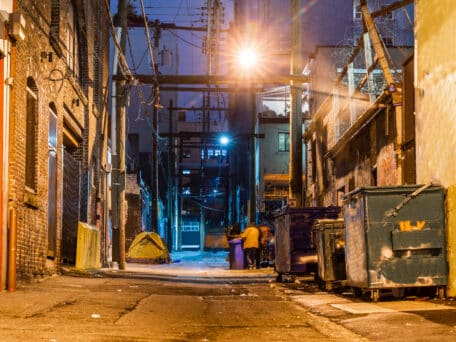In July 2015, Jay Inslee announced his intention to pursue his extreme “green” agenda by bypassing the state Legislature and imposing a new carbon rule on our state. Inslee directed the state Department of Ecology (DOE) to begin developing new carbon reduction regulatory rules that he thinks he can impose on the state using his executive authority.
Inslee did not specify what industries he wants covered by the rule in his directive to the DOE. However, he did note via a letter to the director of the DOE that carbon emissions in our state are “generated mostly from energy production and use, manufacturing, and transportation.” Inslee specifically pointed out the latter as the largest contributor.
Inslee asked the DOE to produce a draft rule by January 2016, to be ready for adoption in summer of 2016. It is—to say the least—an aggressive timeline that reveals Inslee more concerned with his legacy as our nation’s greenest governor than with getting even his extreme “green” agenda right.
The DOE kicks off the draft rule process
Today, the DOE began the process of “writing a rule that would require the state’s largest polluters to reduce their greenhouse gases.” According to a press release, the DOE is considering a rule that would impact businesses and organizations that are responsible for producing 100,000 metric tons. Likely, the rule will impact natural gas distributors, petroleum fuel producers, factories, power plans, waste facilities and metal manufacturers.
It does not appear that the DOE is concerned with abiding by Inslee’s rushed deadline. The DOE announced it would “hold meetings and hearings to gather input from everyone interested in participating” over the next year. Attempting to offer reasons as to why these meetings are necessary, the press release states,
“Washington is particularly vulnerable to a warming climate. Communities depend on snow-fed water supplies to provide drinking water, irrigation for agriculture, and almost 75 percent of the state’s electrical power. Nearly 40 communities, including many of our largest population centers, are threatened by sea level rise along Washington’s 2,300 miles of shoreline. And shellfish beds, which are a major industry on Washington’s coast, are susceptible to ocean acidification – created when carbon dioxide reacts with seawater.”
The DOE relies on unverified scientific claim
It is interesting that the DOE chose to use ocean acidification killing off shellfish as the example for how climate change is impacting the Pacific Northwest. Inslee has long pointed to dying oysters as an argument for implementing his extreme “green” agenda.
In fact, as Shift pointed out, dying oysters became his “central argument for cutting carbon emissions” in 2014. When the New York Times profiled Inslee’s campaign to implement his carbon reduction plan, the argument took center stage. The New York Times wrote, “Billions of baby oysters in the Pacific inlets here are dying and Gov. Jay Inslee of Washington is busy spreading the bad news.”
The problem with Inslee’s argument—and now the DOE’s example—is that absolutely no evidence exists that oysters are dying due to ocean acidification or any other reason. Ironically, scientists from the DOE confirmed that fact. Last year, a DOE scientist admitted the science on ocean acidification “is not there” to back up Inslee’s assertions—and now, apparently, the DOE’s assertions.
The DOE makes debunked assertion
The DOE’s press release also states, “Greenhouse gases, most of which come from the carbon dioxide emitted from power plants, industry and vehicles, are driving significant changes in the Earth’s climate and influencing weather patterns in the Pacific Northwest.”
That assertion is, again, contrary to evidence. Last year, a study revealed that the documented warming over the course of a century on the U.S. West Coast is entirely a result of natural causes, not human emissions and not greenhouse gases. Scientists concluded, “The vast majority of coastal temperature increases since 1900 are the result of changes in winds over the eastern Pacific Ocean.” The authors further found “no evidence that those weather patterns were themselves being influenced by the human burning of fossil fuels.”
Chinese president’s visit presents interesting timing for DOE announcement
The DOE made its announcement in the backdrop of Chinese president Xi Jinping’s visit to Seattle this week. The ironic timing sets the stage for an interesting dichotomy.
China is by far the world’s biggest carbon emissions offender. China’s emissions from fossil fuels grew 150% from 1995 to 2010. The U.S. Energy Information Administration’s (EIA) projections indicate that, by 2030, China’s carbon emissions will surge to unprecedented levels—that’s despite President Obama’s one-sided, “historic” carbon deal with the communist regime.
China’s long-term and ongoing abuse of the environment is truly appalling. Air pollution threatens China’s economy (grounding flights and shutting down highways), the health of the population, and food supply (agriculture suffers from “nuclear winters”).
Meanwhile, Washington State emits approximately 1/10 of 1% of the world’s carbon emissions. And, between 2007 and 2011, our state managed to reduce carbon emissions by 9.75 percent—largely the result of a dramatic increase in hydroelectric power.
New regulatory rules won’t impact emission levels
Washington’s low contribution to emission levels means new carbon regulatory rules would do nothing to lower our state’s contribution to carbon emission levels. As KIRO Radio’s Dori Monson pointed out, no one—not even Inslee and his extreme green supporters—actually believes regulatory rules will make a difference. By even the most optimistic projections, new regulations would produce results that are virtually meaningless to air pollution reduction and/or human health. But, they would negatively impact our state’s economic health. Unfortunately, Inslee and his supporter just don’t care.
That’s because, in the end, extreme “green” policies are not about reducing carbon emissions. They are about even bigger government at the expense of taxpayers.




